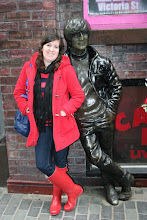After postponing our excursion on two separate occasions due to gloomy weather and stranded friends thanks to a certain ash cloud, I finally made a visit to Hampton Court Palace this past weekend on a particularly stunning warm day.
The royal palace, which was built by Cardinal Wolsey in 1514 and subsequently passed on to King Henry VIII when his chief minister fell from favour in 1529 (due to his failure to secure an annulment of the King’s marriage to Catherine of Aragon so that he could marry Anne Boleyn), is located in the London borough of Richmond-upon-Thames in the southwest. Over the years the palace has been enlarged, first by Henry and then by William III in the following century in a bid to rival Versailles.
The palace spans years of English architectural styles, transitioning from the domestic Tudor to the perpendicalur Gothic to the Italian Renaissance classical style. Henry VIII enhanced the Gothic-inspired Tudor style but the hybrid architecture would change again when Inigo Jones introduced strong classical influences from Italy to all the London palaces of the first Stuart kings.
The palace has been home to many Kings and Queens since the 16th century, but for me, the most interesting history it has seen is the Tudor years. It might be because I love watching the television series 'The Tudors', that sexes up Henry VIII’s (played by Jonathan Rhys-Meyers) tumultuous marriages and unstable rule.
Many of the most famous moments in the Tudor dynasty took place within the walls of Hampton Court Palace. In 1537, the King’s only male heir, the future Edward VI, was born at the palace and his mother, Jane Seymour, died there three weeks after the difficult birth. Four years later, while attending Mass in the palace’s chapel, the King was informed of his fifth wife’s adultery. The Queen, Catherine Howard, was dragged away screaming from a gallery that leads to the chapel and it is said that her ghost still haunts it.
When Henry VIII died followed by his only son, the throne went to Mary I, the King’s daughter with his first wife, Catherine of Aragon. Hampton Court Palace is where she and her husband, King Philip II of Spain, spent their honeymoon. That marriage was a childless one and when Mary’s half-sister Elizabeth I (Henry’s daughter with Anne Boleyn) became Queen she had the Eastern kitchen built – which today is the palace’s public tea room.
Besides the history that echoes throughout the palace, it is also a really interesting place to spend the day walking around – even if you are not a history junkie. When I ventured out here with Diane and Lauren we were lucky enough to have a warm and sunny day, which are few and far between in the UK. Though we went indoors to see the various wings, the apartments, the chapel and Great Hall (where William Shakespeare and his players performed for the royalty) and the haunted gallery, we spent a lazy afternoon enjoying a boozy picnic and lying in the grass amid the spectacular gardens.
The garden grounds as they appear today were laid out in the 17th century. Apparently, there are no authentic remains of King Henry VIII’s gardens. The dominating feature of the gardens is the great architectural landscaping scheme that was constructed for Christopher Wren’s (also the father of such feats as the dome of St. Peter’s Cathedral) new additions. A water-bounded semicircular parterre covers the east front with three avenues radiating out in a crow’s foot pattern. The great canal, which is known as the Long Water, was excavated during the reign of Charles II in 1662 and is another immediately recognizable influence from Versailles.
Once we had soaked in the sun and semi-napped on our picnic blanket, drowsy from two bottles of rose, cheese, crackers, meats and sweets, we headed off to explore two of the most famous aspects of the palace grounds: the Great Vine and the Hampton Court Maze. The Great Vine is currently housed inside a conservatory for protection. Planted in 1769, by 1968 it had a trunk 81 inches thick and spanned a length of 100 feet. It still produces an annual crop of grapes. The Maze was planted in the 1690s for William III of Orange. It covers a third of an acre and contains half a mile of paths. I quite enjoyed walking through it, until I felt like we weren’t going to get out, and then I had to use the emergency exit.
It was a great day out and really makes for a wonderful day-trip from downtown London. With the right weather, the grounds offer a beautiful place to enjoy the season while boning up on your Tudor and Stuart dynasties. Just read that over and I sound like I am selling tours. Well, if you want to come visit I would be more than happy to run that tour for you.
Monday, 24 May 2010
Subscribe to:
Post Comments (Atom)


No comments:
Post a Comment